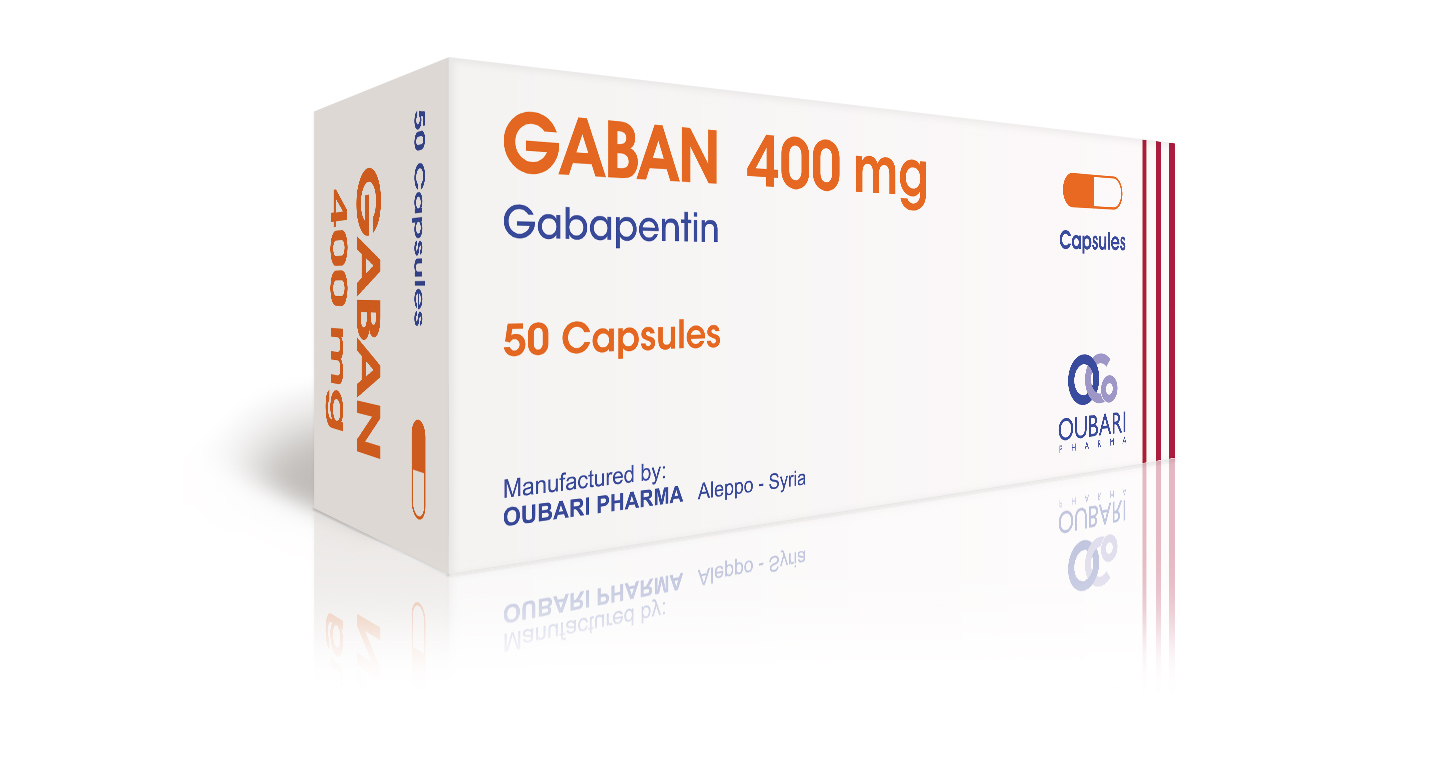Generic Name: Gabapentin
Dosage Form: Capsules
License: Generic
Category: Antiepileptics & Anticonvulsants
Packaging: 10 Capsules x 5 Blisters
More Info

Generic Name: Gabapentin
Dosage Form: Capsules
License: Generic
Category: Antiepileptics & Anticonvulsants
Packaging: 10 Capsules x 5 Blisters
*Packaging design and product name may be different in your country.
Each capsule contains :
In adults with postherpetic neuralgia, Gaban therapy may be initiated as a single 300-mg dose on day 1, 600 mg/day on day 2 (divided BID), and 900 mg/day on day 3 (divided TID).
The dose can subsequently be titrated up as needed for pain relief to a daily dose of 1800mg (divided TID).
In clinical studies, efficacy was demonstrated over a range of doses from 1800 mg/day to 3600 mg/day with comparable effects across the dose range.
Additional benefit of using doses greater than 1800 mg/day was not demonstrated.
Gaban is recommended for add-on therapy in patients 3 years of age and older.
The effective dose of Gaban is 900 to 1800 mg / day and given in divided doses (three times a day) using 300 mg or 400 mg capsules or 600 or 800 mg tablets.
If necessary the dose may be increased using 300 or 400 mg capsules or 600 or 800 mg tablets, three times a day up to 1800 mg/day.
Dosages up to 2400 mg/ day have been well tolerated, doses of 3600 mg /day have also been administered for a short duration and have been well tolerated.
The maximum time between doses in the three times a day schedule should not exceed 12 hours.
The starting dose should range from 10 – 15 mg/kg/day in 3 divided doses, and the effective dose reached by upward titration over a period of approximately 3 days. The effective dose of gabapentin for patients 5 years of age and older is 25 – 35 mg/ kg/ day and given in divided doses (three times a day).
Dosages up to 50 mg/ kg/ day have been well-tolerated and the maximum time interval between doses should not exceed 12 hours.
If Gaban is discontinued and / or an alternate anticonvulsants medication is added to the therapy, this should be done gradually over a minimum of 1 week.
In patients with stable renal functions creatinine clearance can be reasonably well estimated.
Dosage adjustment in patients ≥ 12 years of age with compromised renal functions or undergoing hemodialysis is recommended as follows in Table (1):
| Renal Function Creatinine Clearance
(mL / min ) |
Total daily dose
mg / Day |
Dose Regimen
( mg ) |
||||
| ≥ 60 | 900-3600 | 300 TID | 400 TID | 600 TID | 800 TID | 1200 TID |
| > 30-59 | 400-1400 | 200 BID | 300 BID | 400 BID | 500 BID | 700 BID |
| >15-29 | 200-700 | 200 QD | 300 QD | 400 QD | 500 QD | 700 QD |
| 15 | 100-300 | 100 QD | 125 QD | 150 QD | 200 QD | 300 QD |
For patients with creatinine clearance < 15 mL/min, reduce daily dose in proportion to creatinine clearance (e.g., patients with creatinine clearance of 7.5mL/min should receive one half the daily dose that patients with a creatinine clearance of 15 mL/min receive).
| Kidney function | Post-Hemodialysis supplemental Dose ( mg ) |
| Hemodialysis | 125 – 150 – 200 – 250 – 350 |
Patients on hemodialysis should receive maintenance doses based on estimates of creatinine clearance as indicated in the table (1) and supplemental post-hemodialysis dose administered after each 4 hours of hemodialysis as indicated in the table (2 )
Because elderly patients are more likely to have decreased renal function, care should be taken in dose selection, and should be adjusted based on creatinine clearance values in these patients.
*The information provided above is general in nature and for informational purposes only. It is NOT a substitute for the advice of your doctor. You must always consult your healthcare professional before starting any medication/supplementation program.